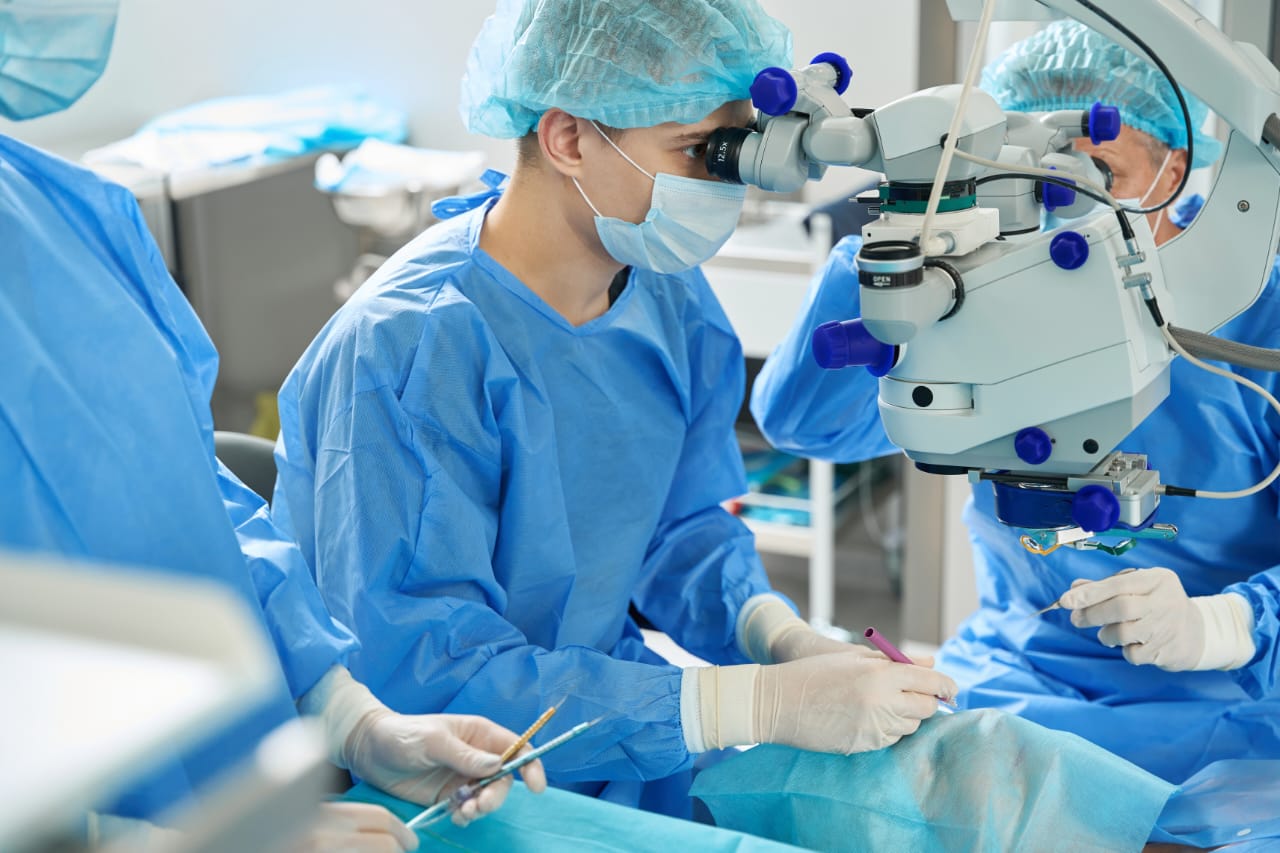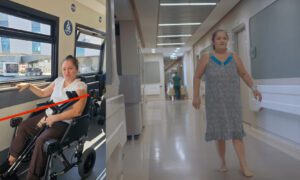Cataracts are a leading cause of vision loss in adults over 60, but breakthroughs in surgical technology have made treatment more advanced. If you’re considering cataract surgery, you deserve to know your options. But with so much information out there, it’s easy to feel overwhelmed. What if there were an advanced cataract procedure? One that combines your surgeon’s expertise with the latest technology, offering great precision and personalization without needing handheld blades? That’s precisely what Robotic Laser Cataract Surgery (Robotic LCS) offers. This new approach combines your surgeon’s skill and the power of advanced robotic technology, creating a next-generation solution for treating cataracts.
What Is Robotic Laser Cataract Surgery?
Robotic Laser Cataract Surgery is an advanced cataract procedure that pairs your surgeon’s expertise with robotic technology. Here’s how this innovative approach works to help restore your vision:
- Advanced Imaging: Robotic LCS uses robotic imaging to identify the structures your surgeon needs to see to perform cataract surgery confidently.
- Real-Time Adjustment: The system monitors your eye and adjusts the treatment if needed.
- Blade-Free Incisions: Laser-guided incisions replace handheld blades for added precision.
- Circular Capsule Openings: The laser creates a precise circular opening in the lens capsule, supporting accurate lens placement.
- Astigmatism Management: If you have astigmatism, Robotic LCS can help manage it during the procedure.
Benefits for Patients
Robotic Laser Cataract Surgery is a groundbreaking procedure that brings together your surgeon’s skill with advanced robotic intelligence and precision. This unique approach provides the best of both worlds—your surgeon’s expertise, supported by robotic technology designed to provide you with your best vision possible. To learn more about robotic cataract surgery, visit our robotic cataract surgery FAQs page.
Here are the key benefits you can expect when choosing Robotic Laser Cataract Surgery:
- Precision: Robotic LCS uses robotic precision to soften the cataract for easier removal, prepare the eye for optimal placement of your IOL, and manage your astigmatism.
- Reduction in human errors: Robotic Laser Cataract Surgery reduces human errors that can affect visual outcomes by making programmed incisions with robotic laser precision instead of handheld instruments.
- Customization: Robotic LCS uses robotic intelligence to analyze your individual measurements and recommend an optimized treatment for your surgeon to review and confirm.
- Comfort: The robotic laser is designed to enhance patient comfort by being gentle on the eye, reducing procedure time, and potentially speeding up healing time.
- Advanced Visual Outcomes: ALLY® Robotic Laser Cataract Surgery™ is the most advanced procedure available to treat and restore one of your most valuable senses—your sight.
- Peace of mind: When you choose Robotic Laser Cataract Surgery, you can rest assured knowing you are choosing the latest procedure available to restore your valuable sense of sight.
Why Robotic LCS Over Manual or Basic Laser Surgery?
Traditional manual surgery relies on a surgeon’s hand. Basic laser surgery offers limited automation. Robotic LCS provides your surgeon with advanced robotic assistance, reducing human errors that can affect visual outcomes. The use of robotic intelligence and precision guides gentle lens removal, optimal placement of your lens (IOL), and accurate astigmatism management if needed, so that you can experience your best possible vision after cataract surgery. Learn why you should choose Robotic LCS from among 3 types of cataract surgeries.
Who’s a Candidate for Robotic LCS?
Robotic LCS is suitable for most adults with cataracts, especially those with:
- Moderate to severe cataracts
- Astigmatism
- Interest in reducing dependence on glasses
- A desire for the latest technology in vision care
Explore Robotic LCS if you’re considering cataract surgery; it offers a highly advanced option. Talk to your surgeon to see if it’s right for you. Additionally, you can find robotic cataract surgeries using our new tool by visiting: https://roboticlcs.com/find-doctor



































